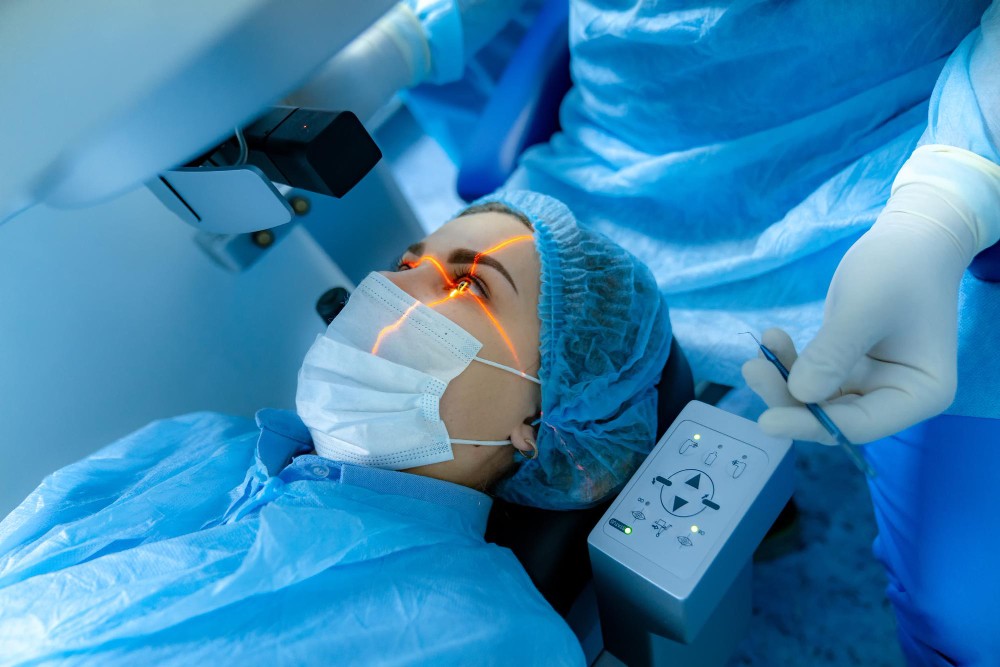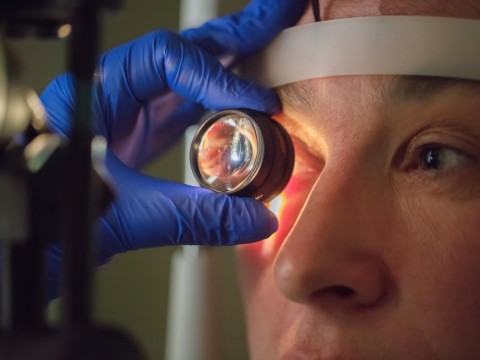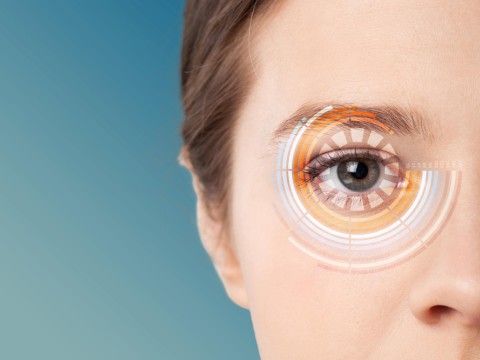Quote of Dünyagöz
Dünyagöz Hospital: Multifokal Toric Fako (Both Eyes)
Multifocal toric phakoemulsification, also called multifocal toric FAKO, is an advanced surgical intervention for treating vision problems related to cataract and astigmatism. By using this innovative method, a person can sharply see at multiple distances without using eyeglasses or contact lenses.
Gaining tremendous interest due to the increasing number of patients with cataract treatments and solutions for their vision, Multifocal Toric FAKO is among the most popular alternatives today. Besides being effective in treating cataracts, it also serves to reduce astigmatism-a highly comprehensive solution when it comes to enhancing vision. With the group commitment to excellence, Dunyagoz Hospitals assure their clients of unparalleled care.
What is Multifocal Toric FAKO?
Multifocal toric FAKO refers to that special form of cataract surgery using very advanced IOLs. The clear vision at varied distances, via multifocal lenses with the astigmatism correction of toric lenses, is combined now in this type of lens. The FAKO technique involves the use of ultrasound energy to emulsify the cataractous lens, which is then aspirated with gentle suction, allowing the placement of the new multifocal toric lens.
This enables patients to enjoy a wider range of vision-near, intermediate, and far-with significant reduction or elimination of their dependence on glasses or contact lenses.
Advantages of Choosing Dünyagöz Hospitals Group
The system of Dunyagoz Hospitals Group has gained its reputation for competent ophthalmic treatment, above all cataract surgery. The group is made up of highly qualified and experienced surgeons who have affirmed their specialization in multifocal toric FAKO. Every patient receives an individual attitude to treatment.
With the latest technology and medical advances, Dünyagöz Hospitals guarantee the highest standards of safety and effectiveness in all the surgery conducted. The clinic has friendly staff who put comfort and satisfaction at the top of the priority list, hence making the clinic very reliable for eye care.
Who is the Candidate for Multifocal Toric FAKO?
Multifocal toric FAKO is recommended for the following candidates:
Suffer from Cataracts: Patients with diagnosed cataracts where they need to affect their daily activities.
Suffer from Astigmatism: Those people who suffer from astigmatism and who want to enhance their overall vision.
Want Less Dependence on Glasses: Those who want to minimize their dependence or at all get rid of glasses.
It is, therefore, important that candidates undergo rigorous pre-operative evaluations as a means of ruling them out for this advanced procedure. Extensive assessments undertaken by the hospitals in this Group are paramount to ensuring every patient receives appropriate care.
Multifocal Toric FAKO Surgery
Generally, the process of multifocal toric FAKO starts with extensive consultation and examination of the eye. The surgery is carried out under local anesthesia, and small incisions in the eye are made. The surgeon uses ultrasound energy in breaking down the cataractous lens and removing it through the incisions. Finally, after removal of the cataract, a multi-focal toric IOL is carefully implanted.
It involves the entirety of the process in 30-60 minutes for each eye, in which a patient can expect to be discharged on the same day. This is less invasive, hence allowing one to return home sooner and with less discomfort compared with the other types of cataract surgical procedures.
Recovery Process
Recovery after Multifocal toric FAKO varies from patient to patient. Though in some cases, patients claim their vision has improved right after the surgical procedure; many a time, the vision may blur up and go down since the eyes may get accustomed to the new lenses that have been just placed inside the eye. Therefore, generally, the patients are advised to rest for a couple of days and avoid heavy activities.
Follow-up visits after the procedure will allow monitoring of healing and the proper functioning of these lenses. DünyaGöz Hospitals Group gives post-operative care in detail for better results.
Advantages of Multifocal Toric FAKO
Some of the advantages of multifocal toric FAKO are:
Sharp Vision: Provides sharp vision at multiple distances with reduced dependence on eyeglasses.
Astigmatism Correction: Corrects cataract and astigmatism in a single treatment process.
Less invasive, FAKO is associated with quicker recovery and less postoperative pain.
All these benefits make the multifocal toric FAKO very popular among patients suffering from cataract and trying to improve their quality of life.
Surgical teams at Dünyagöz Hospitals Group use only the most current surgical techniques in their patients and also provide them with a choice of performing multifocal toric FAKO that allows them to see sharply from a distance rather than hazy vision and include this into daily life. You may take the first step into a life with sharper vision and being more active with expert advice and comprehensive support from our physicians. Let us remind you: your informed decision may bring success regarding your eye care journey.
- Health Insurance
-
Accommodation
- Online Healthy Life Assistant 9/5
- Post - Experience Follow Up 6 Month
-
Extra Privileges
- Transfer

- Health Insurance
-
Accommodation
- Online Healthy Life Assistant 24/7
- Post - Experience Follow Up 1 Year
-
Extra Privileges
- Pre-Treatment Doctor Consultation
- Transfer

 Private
Private
- Health Insurance
- Healthy Life Butler
- Post - Experience Follow Up 2 Year
- World-Famous Doctor Consultation
-
Extra Privileges
No suitable hotel found for the relevant dates!
* Price varies depending on extra and upgrade selections.
-
Monofokal Fako (Both Eyes)SelectStarting From 3,529.00 €
-
Monofokal Femto (Both Eyes)SelectStarting From 4,706.00 €
-
Multifokal Fako (Both Eyes)SelectStarting From 8,235.00 €
-
Multifokal Femto (Both Eyes)SelectStarting From 9,412.00 €
-
Multifokal Toric Femto (Both Eyes)SelectStarting From 10,588.00 €
Cataracts are a natural cloudiness that develops on the eye's lens as we age, leading to blurred vision. When traditional corrective measures fail, cataract surgery becomes essential to replace the clouded lens with a synthetic intraocular lens.
While all surgeries involve some level of risk, cataract surgery is a relatively safe procedure when performed by expert doctors. With experienced surgeons, the risks are minimal.
Cataract surgery is performed under local anesthesia, numbing only the eye area without rendering the patient unconscious. The surgeon makes a small incision on the eye surface and removes the clouded lens. Typically, an artificial lens (intraocular lens) is then placed in the position of the removed lens. Thanks to the use of modern technology, cataract surgeries are generally carried out smoothly and swiftly. Patients often experience a significant improvement in their vision after the surgery.
An IOL is a synthetic lens implanted to replicate the natural lens function.
Advanced IOLs often eliminate the need for glasses, but patients opting for traditional single-vision IOLs may need glasses for reading and computer work post-surgery.
Cataracts can indirectly cause nearsightedness or farsightedness and, in rare cases, may lead to glaucoma if left untreated.
Patients may experience minimal pressure but rarely feel pain during surgery. Anesthesia and medication ensure comfort, and the procedure typically takes around 20 minutes.
Cataracts do not redevelop after surgery, but clouding of the lens capsule may occur, requiring a capsulotomy for correction.
The femtosecond laser is a new technology used in cataract surgery. It has been successfully used in refractive surgery for 15 years and is now an important part of bladeless laser surgery for cataracts. Before the surgery, the femtosecond laser performs important maneuvers to ensure precision and safety. This technique, also called bladeless laser surgery, makes the overall surgical process easier and safer by completing certain stages beforehand. The femtosecond laser also helps mark the correct position for the lens implantation, which improves the outcome of the surgery.
The initial recovery period after cataract surgery is relatively quick, with many patients experiencing improved vision within a few days. However, complete healing and stabilization of vision may take several weeks.




